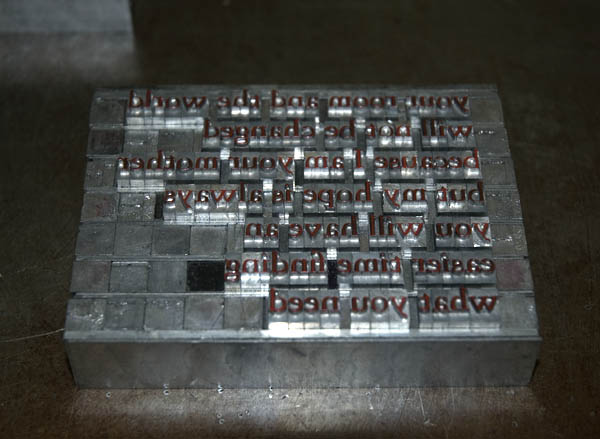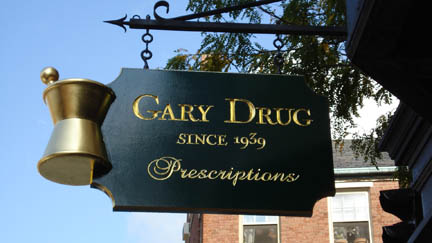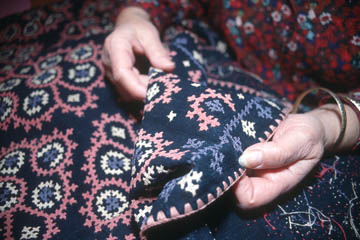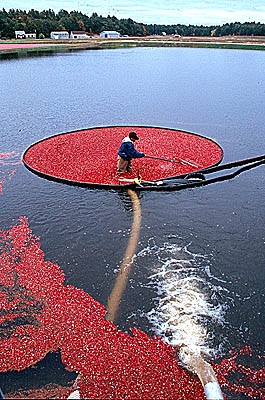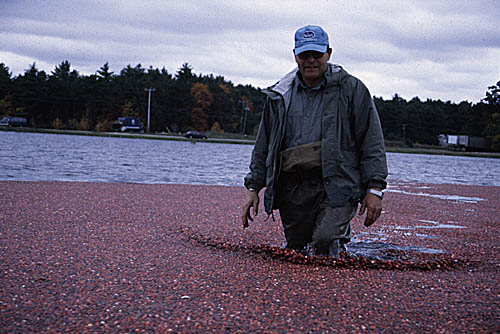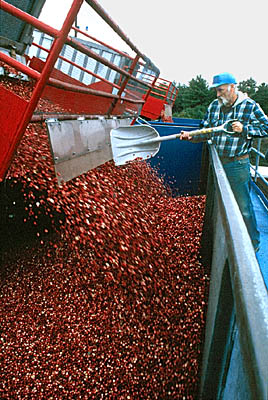
Last week we headed out to Worcester County to meet Joseph Johns, a.k.a. Cayoni, a Muscogee Indian who is reputed to be the last practicing, (if not last surviving) traditional Muscogee Creek woodcarver in the United States today. Here you see him holding one of his carvings — a green corn mask which is used in the Muscogee Green Corn Ceremony. Johns explains that the festival is usually held around the first of June because the corn is beginning to ripen.
“[The greencorn masks] are carried in your hand and rested on your shoulder. See? And you kind of dance in a procession of people. It’s a very festive time of year because the fires are all extinguised in the village — every fire goes out. They pour water on them. And they start the festival. No fire is lit until it’s over. And all things are forgiven.”
Though Joseph Johns has lived in Massachusetts for nearly 60 years, he was raised on an island in Georgia’s Okefenokee Swamp. It was there he learned traditional carving from his grandfather, Tahoma. It is important to Johns that you know his Indian name, “Cayoni” which means bad weather. On the night he was born, a freak storm brought high winds and snow — an unusual weather pattern for southeast Georgia.
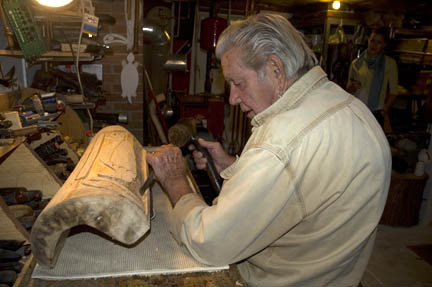
Below is a traditional woodcarving Johns created around thirty years ago. Made of cypress wood with elkhorn eyes, the carving symbolizes the trials of the Trail of Tears.
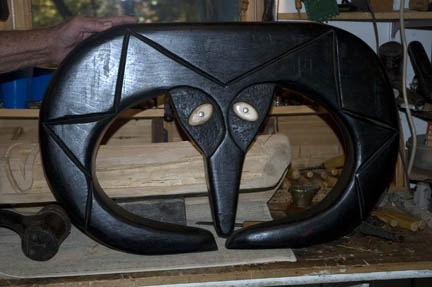
“When the army removed the people from the Okefenokee Swamp [forcing them to march] to Oklahoma, they were told there would be buffalo, antelope, all kinds of animals out there for them to eat when they got there. That was during the Trail of Tears March. When the people got to Oklahoma, the only thing out there was a few poor jack rabbits and an antelope or two, and no buffalo. So the people wound up eating their horses and their dogs and their cats, and every damn thing that had followed them out there to Oklahoma. And somebody created this design; instead of it having the buffalo horns come up, they turned down because it was a sad occasion and they had been lied to . . . it’s an old design.”
As if being the last in a line of Muscogee woodcarvers isn’t rare enough, Johns also has a singular military history. When he was only fifteen years old, the navy came around looking to recruit Muscogee men to serve in World War II. Johns’ exceptional marksmanship was too good for the Navy to pass up. A career military man and Native Veteran, Johns went on to serve in the Normandy Invasion and Korean War, and did two tours in Vietnam, before retiring from the military. He then spent six years in the Delta Force. As if that weren’t enough, he survived being bitten by a venomous snake (which blinded him for four days) and he chain smokes. Clearly, a man with nine lives.

Now enjoying his retirement, Joseph Johns and his wife live in bucolic New Salem, Massachusetts.

Have a comment? Send me an email: maggie.holtzberg@state.ma.us

